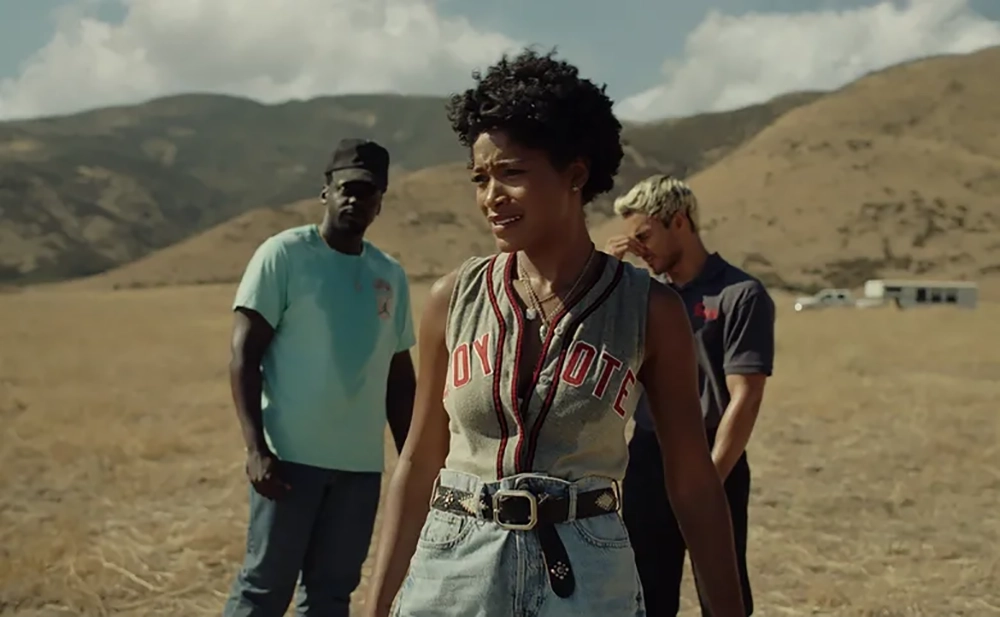Not only is “Nope” Jordan Peele’s best directorial effort, it’s his strongest feature to date. Although the vision is stronger than the pen this time around, the Spielberg-esque scope is all-embracing, and his craftiness in the individual horror/sci-fi set pieces is utterly remarkable.
Jordan Peele shook up the horror world in 2017 with his “Get Out,” his directorial debut. The film would win him an Oscar a year later. Although I give it points for originality and its social messages towards injustices and racism, expressing that its horrors are entirely literal and its terrifying performances (particularly Daniel Kaluuya and Catherine Keener), I wasn’t blown away by it as many others were. I couldn’t get past the various similarities that its narrative had with Bryan Forbes’ “The Stepford Wives” (which I personally think is a better film). Two years later, he returned with his sophomore feature “Us.” It began incredibly engaging, as the audience watching, and the characters on-screen started exploring the duality of man and the ramifications of privilege. It centered on the idea that whatever we deserve will one day come at the expense of someone else’s freedom or joy. However, as its story keeps transgressing through its almost two-hour run-time, the tension and horrors are slowly disappearing.
Peele and the Creation of a Summer Blockbuster
Because there’s no strain in its horror set-pieces or trepidation in its shadowy atmosphere, the audience stops engaging well with the feature. The aspect of a body double of yourself haunting you like a ghostly presence lurking in the shadows started feeling less and less frightening than it was initially. Ultimately, the main problem was that Peele story decisions. He decided to explain the entire film and its ideas in the last few minutes, which annoyed me highly. “Get Out” had a sense of ambiguity throughout its entirety. This helped the film get through some narrative cracks and “Stepford Wives’” trappings. “Us” started with a fascinating introduction but shot itself on both feet once it reached the halfway mark. Nonetheless, the time has come for yet another feature of the former sketch-comedy writer. This time he is bringing the big guns, and the studio is giving him the cash he deserves.
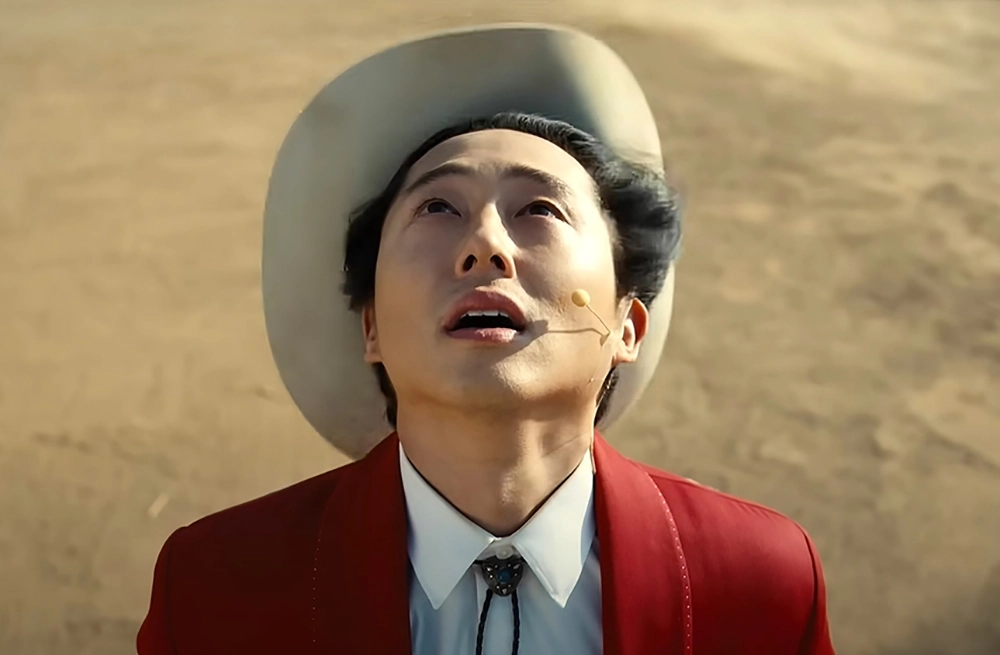
Crafted by the fear of cinema’s future (plagued by the pandemic and the rise of straight-to-streaming-service releases), Peele decided to create a summer blockbuster worthy of the surname spectacle. He wanted to create a piece of work that will be visually striking and will leave moviegoers in awe. Hence the creation of “Nope,” a film that takes inspiration from some of Spielberg’s features (specifically “Jaws,” “Close Encounters of the Third Kind,” and “E.T. the Extra-Terrestrial“), as well as M. Night Shyamalan’s “Signs,” and blends it with Peele’s knack for developing unblemished and twisty narratives. The trailer sells you another movie. The one presented in full is not the one being marketed, but it is for the better. Admittedly, “Nope” might have some storytelling development issues in its backbone, predominantly in the third act. Still, its visualization, care of the craft, and boldness are hefty enough for it to maintain its strength.
Peele’s Most Divisive Film to Date?
This will probably be regarded as Jordan Peele’s most divisive work; but, in my book, I consider it his best picture to date. “Nope” begins with the aftermath of something gone tremendously wrong – a traumatic experience that one of the characters in the film has phased before and has remained in his mind ever since. That character hasn’t shaken off the shocking images of what happened decades ago. It is a bit odd that this is the introduction to what is supposed to be a sci-fi picture. However, at the same time, it causes the audience to question the space we are in. There’s tension filling the screen from beginning to end, and the atmosphere is pitch black. And all of that happens in less than five minutes. After such a curtain opener, we meet OJ, Otis Junior (Daniel Kaluuya, who has returned to work with the man who skyrocketed his career to the stars), and his father, Otis Haywood Sr. (horror veteran Keith David), who are doing some daily errands around their ranch.
Also Read: Review: ‘Watcher’ a Brilliant Turn from Maika Monroe and Riveting Directorial Debut from Chloe Okuno
However, out of the blue, something strange happens. Both of them hear the sky as if it was screeching, and objects start dropping from the clouds – keys, coins, shoes, everything you could imagine. One of those objects manages to cut deep into Otis Haywood Sr.’s eye, killing him on impact. The film jumps to six months after the strange incident, where we see OJ and her sister, Emerald ‘Em’ Haywood (excellently and charismatically played by Keke Palmer), failing to ensure the horses are ready to appear in movies. Rather quickly, we meet Ricky ‘Jupe’ Park (Steven Yeun). We discover he was involved in the incident that introduced the picture. The story transgresses through some comedic set pieces involving a brother-sister relationship. Meanwhile, strange occurrences begin to haunt the small-rural city of Agua Dulce, California. It appears to be UFOs (or UAPs, depending on who you ask around the city). With this element comes the aspect of bad miracles and spectacles. This becomes the core of Peele’s narrative in his third feature.
Commenting on Today’s Age of Cinema
What is a “bad miracle”? How or when do we approach one? What should we do in its presence? Do we actually deserve such dignity or “gift”? These questions are stuck in the minds of the various characters we meet during the film’s entire runtime. One thing’s for sure; everybody wants a piece of it no matter the cost. Some of them will try and take advantage of them, and others want to spread the truth. However, everything interlinks for monetary reasons or self-exploitation in some way, shape, or form. It also correlates to the mistreatment of wild beasts, as presented in the film with the aspect of trying to control or be the master of predators – as jokingly said by Michael Wincott’s character, Antlers Holst, “just ask Siegfried & Roy.” The viewer then starts to ponder about what they would have done in that individual situation; would they be the entertainer (the person who takes advantage of said godsends) or the watcher (the people observing in the stands waiting for something to shock them).
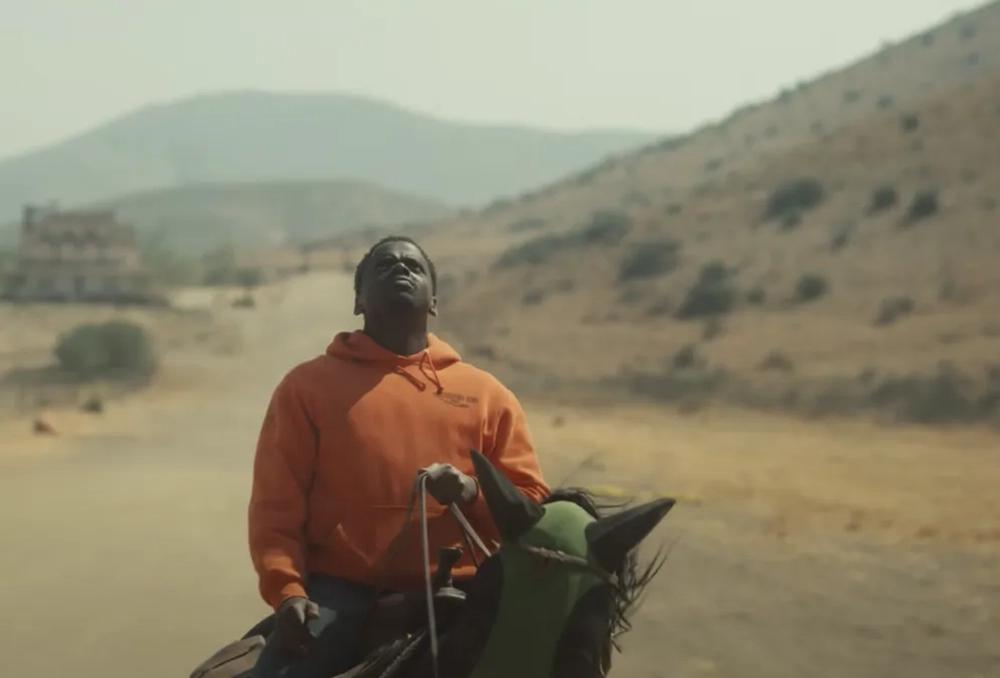
This might be a juxtaposition to today’s age of cinema, where the art is being “somewhat” lost through the various streaming platforms. And a few filmmakers are given a chance to blow our minds through what they would call “blockbuster entertainment” or “cinematic spectacles.” “Nope” is crafted with that in mind, the aspect of spectacles and bad miracles. Yet, both are in different facets and aspects. The term spectacle here is treated as the blockbuster part of it all – the budget, the self-referential quips, wit, the visualization, and the scope. Peele mocks and teases the audience with his meta jokes about blockbuster filmmaking, popcorn entertainment, and the aspect of enormous scopes — to the point where it sometimes feels too much. However, the comedic timing by the cast elevates the weaker witticisms that take the mickey out of these people in charge of producing and crafting these “blockbusters.”
Atmosphere that Trumps Fake-Outs and Jump-Scares
Although these are a few instances in which its jokes don’t land fully, the overall project is funnier than one might anticipate. Regarding “Nope’s” visualization, it is grand and hefty. This is broadened and boosted by Peele’s directorial hand. This seems to be polished further and further as he keeps delivering projects. In this movie, there’s something bewitching about his direction – something that both “Get Out” and “Us” didn’t have. And it has to do with the expansiveness of its story. It could center on the fact that it has a bigger budget, but it isn’t that. Instead, it is the techniques he and cinematographer Hoyte van Hoytema do during the feature’s entire run-time. Meanwhile, the element of the “bad miracle” relates to the horrors and tension that arrive via the presence of these anomalous beings. Unlike his previous feature, Peele seems comfortable branching out. Peele crafts different ways of building up tension, anxiety, and sheer concern, as well as devising scares for the audiences.
He is often playing with you through fake-outs and jump-scares. However, for the most part, something more prominently terrifying and grand is boiling up in the background and atmosphere. And that adds more heft to its scenes of brutality and insanity. However, its violent scenes aren’t necessarily its scariest. They are however, indeed their most shocking (especially the quick scene of the spectacle’s innards). The sequences in which you hear the sky screaming are very terrifying. Hearing the victims wailing for their lives through the vacuous space of the ranch, as their screams echo through and through, keeps the audience holding tight – waiting for a moment so that they can breathe. Because Peele sets “Nope” on an isolated ranch, he can develop a broader sensation of no-escape or agoraphobia. He slowly constructs a feeling that something in the clouds is watching your and can attack at any moment. This was something missing through Us’ development. Of course, both films are different horror-wise (as this tends towards sci-fi, while Us is more horror-centered).
Harkening Back to Some Masters of Cinema
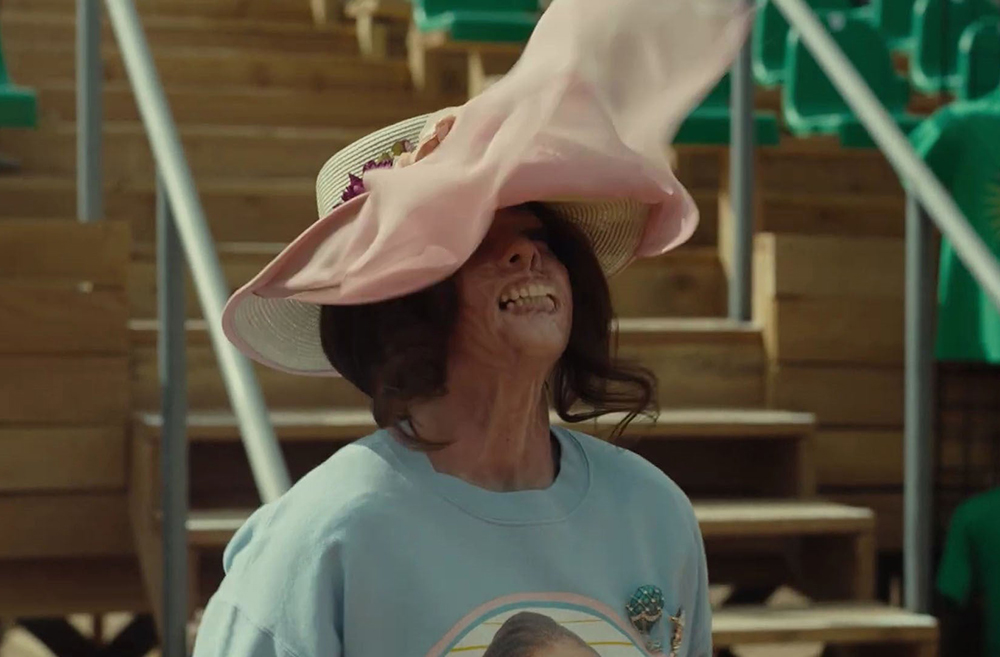
Peele has learned from his errors and developed proper high-anxiety spooks and shocks to engage and frighten the audience. The way Peele builds up tension in every horror/sci-fi sequence is remarkable and deeply impressive. It shows his growth as a director and a visionary. Some people call this the horror version of “Close Encounters of the Third Kind,” which is fair because of the element of aliens coming to Earth, and nobody knows what to do.
However, if we compare it to some Spielberg pictures, the proper connection must be “Jaws” – the masterpiece that cemented the summer blockbuster trend. Instead of looking at the seas, the characters look to the skies and recognize there’s a creature haunting them. Through the excellent sound design and Michael Abel’s titillating score, the audience gets the sensation that there is always something behind them, sometimes emulating John Williams’ classic “Jaws” theme. The irregular minor chord triggers create a sinister feeling of sheer suspense as its crescendos play faster and faster as the “beast” arrives.
What’s Next for Jordan Peele
In addition, there are some quick (at times easy to miss) references to plenty of films like “Texas Chainsaw Massacre” (which made me incredibly happy), “Psycho,” “The Shining,” and other non-horror features. Does “Nope” contain the social messages and commentary that Peele’s previous features had? Not really. And its last act may feel as if it needs further closure.
Also Read: Review: ‘The Perks of Being a Wallflower’ High School Film for the Modern Generation
Nevertheless, the Spielberg-esque thrilling set-pieces and arrangements are tremendously mesmerizing. Peele takes notes from various masters to concoct his own big-budgeted vessel. It is fascinating how Peele, with such ease, manages to dwell in three different genres (horror, sci-fi, and western). What is next for the “Get Out” director? Who knows; but he pulled me back in with excitement about his next feature thanks to his latest feature. With films like “Nope” and “Top Gun: Maverick,” it feels as if the summer blockbusters are back from the dead. Hopefully, next year we see the same trajectory with “Oppenheimer,” “Barbie,” “Mission Impossible: Dead Reckoning – Part 1,” “Indiana Jones 5,” and the other features releasing next year’s summer.
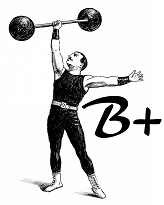
“Nope” is currently only available to watch in theaters.
Support the Site: Consider becoming a sponsor to unlock exclusive, member-only content and help support The Movie Buff!

